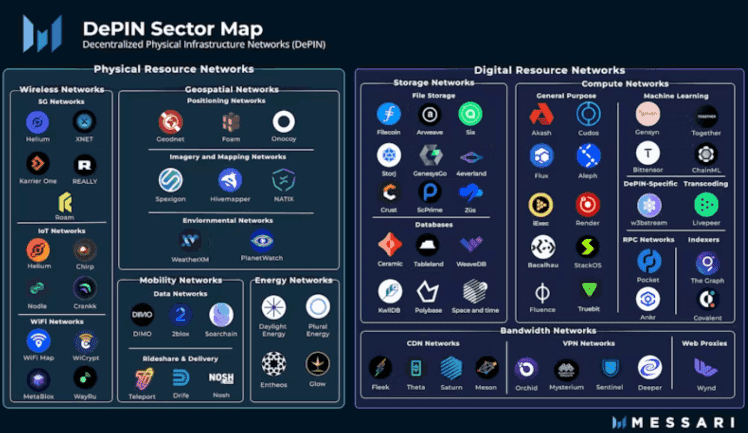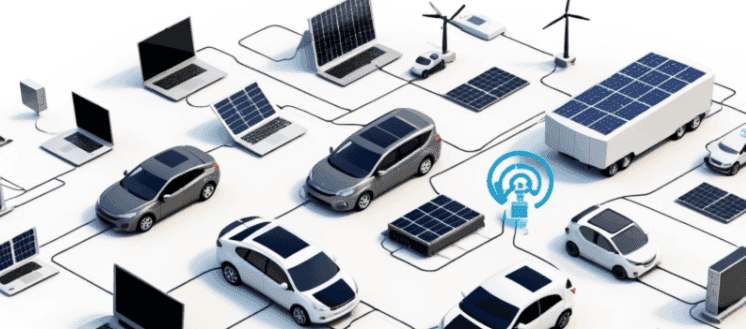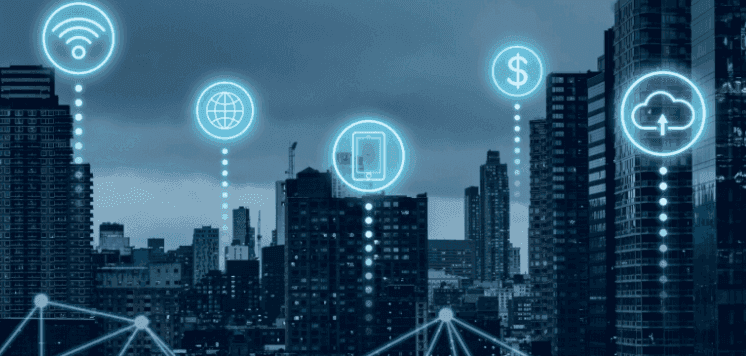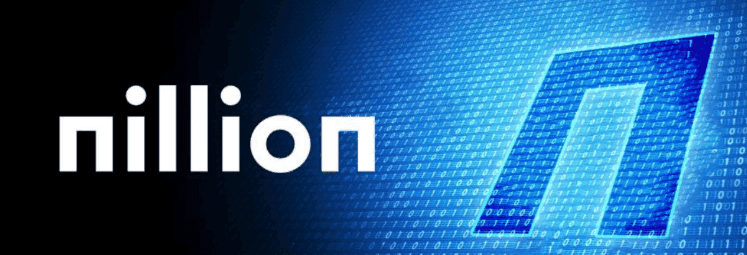If anyone in the space is asked to list narratives to watch for in 2024, DePIN is undoubtedly going to come up. Well, what is it and why does it have our attention? Unlike more self-explanatory narratives such as artificial intelligence or gaming, DePIN doesn’t immediately reveal its meaning at first glance.
So, let's explore the subject further to understand why it’s capturing our attention. We’ll cover the fundamentals, the diverse sectors, and associated projects, examine how DePIN integrates with them, and explore a network's use of blockchain through smart contracts. Furthermore, we'll explore its advantages and why it's something that should have our attention.
DePIN: What is it Exactly?
DePIN stands for Decentralised Physical Infrastructure Networks. Essentially, a term for decentralised applications that integrate a tokenomics structure that drives community participation and incentivises them to build and maintain real-world infrastructure. This is typically facilitated via technologies like smart contracts or the Internet of Things (IoT). This real-world infrastructure includes a variety of physical assets such as machines, devices, vehicles, and robots. Examples include mobility networks, electric vehicle charging stations, and telecom networks.
To get a better idea of how DePINs operate in practice, let's look into an illustrative example: Atlas Navi, dedicated to crowdsourcing mobility data. In this scenario, Atlas Navi deploys a network of smartphones equipped with AI-powered cameras to collect valuable mobility data, such as traffic conditions and road insights. Users engage with the network by downloading a dashcam app developed by Atlas Navi, which processes camera feeds, generates anonymised insights, and shares them with the network. In return for their contributions, users receive tokens as rewards, with the entire process, from data collection to reward issuance, facilitated on the blockchain.

Other contribution-based token distribution methods include rewarding activities such as coding and submitting improvements to the network's codebase, providing educational resources or documentation, and organising community events or initiatives. Like most cryptocurrency projects, you can also participate in governance decisions through voting mechanisms. By directly tying token rewards to tangible contributions that drive the project forward, it creates a strong incentive for the community to remain actively engaged and invested in the long-term success of the DePIN network. Notably, it also helps projects achieve a threshold level of engagement from active builders and passive users. Every project needs a minimum level of engagement to ensure the network's viability and sustainability.
DePIN Sectors: There are a lot of them…
Without taking the time to research DePIN, you’d be hard-pressed to guess how many sectors are part of the protocol (the answer is seven - with nineteen sub-sectors!). Although it would be time-consuming to go into detail for each, we can go through the sector map that Messari compiled to gain an understanding of the vastness of the DePIN space.
Firstly, it is divided into two major areas: Physical Resource Networks and Digital Resource Networks. Within the Physical Resource Networks, you have wireless networks such as 5G networks, IoT networks, and Wi-Fi networks, which most of us are familiar with. There is the Geospatial Network Sector, which encompasses Positioning Networks, Imagery and Mapping Networks, and Environmental Networks. Something you would expect to see from an Environmental Network project here may focus on something called ‘proof-of-location,’ where they tie weather data to a specific location on-chain.
Another sector is Mobility networks, which are further divided into Data networks and Rideshare and Delivery sub-sectors. Lastly, we have the Energy Networks. An example would be the Entheos Network which promotes local energy independence worldwide with the concept of ‘smart batteries’.
On the other side of the Sector Map, we have sectors that more of us are familiar with, such as Digital Resource Networks, including the Storage Network sector consisting of File Storage and Databases. Continuing, we have the Bandwidth Network sector, which comprises CDN networks, VPN networks, and Web Proxies, which is also relatively straightforward. Lastly, there is the Compute Network section, which is divided into General purpose, Machine Learning, DePIN specific, RPC networks, and Indexers. Here we have projects that help process information, whether it be storing, accessing, or sharing.
Let’s look at a few of the sectors closely to take our understanding a bit further.

GeoSpatial Networks
Transportation systems are being revolutionised through blockchain technology and decentralised principles. Mobility Networks enhance transportation efficiency, safety, and accessibility by leveraging crowdsourced data, real-time monitoring, and decentralised decision-making.
A prime example is HiveMapper - a community-based navigation app where users actively contribute to its success. Drivers report real-time traffic conditions, accidents, and road closures, which HiveMapper aggregates and analyses to provide dynamic route recommendations. This decentralised approach aligns with DePIN principles, since users autonomously share data without central control, creating a trustless environment. So, in this instance, you can see how Mobility Networks demonstrate how DePINs transform traditional infrastructure by embracing decentralisation, community collaboration, and data-driven decision-making, paving the way for smarter, more efficient mobility experiences.

IoT Networks
Helium is a blockchain project often referred to as “The People's Network”. It is also described as the fastest-growing wireless network in the world, operating through a decentralised wireless infrastructure that encourages the creation of public wireless networks. They use a unique consensus algorithm called Proof-of-Coverage (PoC). Miners, known as "hotspot operators," deploy physical devices called hotspots to validate wireless coverage and earn rewards in Helium tokens (HNT). These operators are motivated by the rewards they receive for maintaining high-quality network coverage, thereby decentralising network infrastructure ownership and operation and fitting into the DePIN category.
The project's features include its massive coverage, offering long-range wireless coverage globally for IoT devices. Its low cost and scalable nature allow for easy deployment of gateways, making it suitable for various applications such as asset tracking and environmental monitoring. Additionally, Helium-based devices are efficient and have long battery life for extended use.
Telecom Networks
DePIN's telecom networks focus on democratising access by establishing decentralised hotspot networks, offering affordable connectivity options while supporting advanced technologies like 5G. By reducing reliance on centralised telecom providers, DePIN creates a more open and accessible network. DePIN does this by utilising small cells to enhance coverage and capacity, leveraging free spectrum bands in the U.S., and exploring eSIM cards for seamless connectivity.
PKT is an open-source DePIN blockchain project that leverages a peer-to-peer routing protocol called cjdns, PKT establishes a ‘global mesh’ network propelled by community members worldwide. This model shifts the data centre workload traditionally handled by corporations to devices offered by seasoned and novice users, creating greater internet freedom.
Websites within the PKT Network are accessible through traditional web browsers alongside peer-to-peer connections. The vision here is to democratise internet access and allow people to share their internet resources openly. The mentioned mesh network connects devices to create a solid infrastructure resistant to censorship and surveillance. Adding to its utility, PKT offers a decentralised alternative to conventional e-commerce payment processing.

Energy Networks
DePINs are reshaping Energy Grids by transforming electricity distribution from centralised utilities to decentralised, community-driven networks. Traditionally, energy grids have relied on large, centralised utilities for generation, transmission, and distribution. However, decentralisation changes everything by promoting local energy production and consumption. DePINs accomplish this through initiatives like solar panels on homes, allowing for peer-to-peer energy trading among neighbours.
One notable project in this space is Power Ledger, a blockchain-based platform that empowers users to take control of their energy. Power Ledger facilitates peer-to-peer energy trading, enabling individuals with surplus solar panel energy to sell directly to their neighbours through a decentralised marketplace. This is remarkable, considering that many government incentives typically mandate sending all electricity generated back to the grid for processing and redistribution, essentially giving it back to you and your neighbours, but making sure they profit themselves.
Now that we've explored a few of the various sectors within DePIN, in the next section, we'll take a closer look at some projects in the space that have attracted considerable attention for standing out.
The PEAQ Network
Full disclosure: The Coin Bureau has invested in PEAQ network
PEAQ is the second-largest developer ecosystem in Web3 and arguably one of the most important projects in the sector. It’s a multi-chain layer one purposely built and optimised for DePIN and Machine RWA. The network is capable of scaling beyond 100,000 transactions per second while maintaining a minimum transaction cost of approximately $0.00025. This is extremely important considering so many projects build on the network and function in real-time.
One of PEAQ's notable features is its ‘Economy of Things Simulation Network’, Krest. It’s the world's first and only simulation network of its kind. Builders can deploy and test on this live blockchain without risking real-world harm, providing a safe environment for experimentation and development.

PEAQ is built on the Polkadot ecosystem and has a multi-chain architecture, allowing collaboration with other projects while leveraging shared security. Its compatibility with the Ethereum Virtual Machine (EVM) makes it easier for developers familiar with Ethereum to transition and build with them. In true DePIN fashion, the network is maintained by a distributed set of nodes, reducing reliance on centralised providers, and participants actively govern the network, ensuring transparency and inclusivity. PEAQ enables machines, such as IoT devices, cameras, and sensors, to participate in the economy, aligning with DePIN's vision of empowering connected infrastructure.
The Nillion Network
Full disclosure: The Coin Bureau has invested in Nillion
Nillion decentralises trust for sensitive data, similar to how blockchains decentralise transactions. In today's ‘data renaissance’, ecosystems like personalised AI and decentralised trading risk data safety and control by entrusting it to a single entity. The ‘Nillion Thesis’ suggests that decentralised, private data will be the backbone of tomorrow's biggest industries, creating a vast white space of Web3 use cases and verticals.
Nillion's key features include its AI Backbone, which enables the secure and confidential training and inference of AI models, laying the foundation for secure personalised AI. Additionally, Nillion's DePIN Network serves as a confidential backend for other DePIN networks, facilitating diverse physical resource networks such as IoT, agriculture, and supply chains. The project integrates Privacy-Enhancing Technologies (PETs) directly into its infrastructure, ensuring the storage of sensitive data with the highest cryptographic security standard.

Nillion introduces the concept of ‘blind compute’, where nodes generate a key network resource known as a blinding factor through preprocessing. Each node securely stores its share of the blinding factor, distributing trust across the network in a quantum-safe manner. Users can store and process their data by masking it with preprocessed blinding factors, creating Information-Theoretic Secure (ITS) particles that are portable and allow flexible storage solutions. Nodes access a library of user-generated programs that operate over this ‘particleised’ data, handling network authentication and collaboratively managing data access for computation and storage.
A Smart Contract’s Role in DePIN
Smart contracts are self-executing digital agreements and automatically enforce the terms and conditions specified within them. Unlike traditional contracts, they don’t require intermediaries, such as lawyers or banks, to validate or execute them. Within DePINs, they automate and secure various processes related to physical infrastructure. This is done automatically when predefined conditions are met, and once deployed, they can’t be altered. Their code and execution history remain immutable.
An event that would trigger a contract could be a payment received, a temperature threshold reached, or a supply chain milestone achieved. When these conditions are met, the contracts perform predefined actions, such as transferring tokens, updating records, or triggering alerts. This self-executing logic is a key feature of smart contracts, enabling automated processes without human intervention.
If we look back to our Power Ledger example, smart contracts in this instance facilitate automatic energy transactions between solar panel owners and consumers. When excess energy is generated, the smart contract transfers it to the grid or directly to nearby households, and payment is automatically settled based on predefined rates. In the previously mentioned GeoSpatial sector, we have supply chain management, where smart contracts track product provenance. As a product moves from one point to another, such as from the manufacturer to the distributor, the smart contract records this event on the blockchain, ensuring transparency and allowing stakeholders to verify the entire journey.
Amazingly, smart contracts can also automate infrastructure maintenance tasks. For instance, when a sensor detects a structural issue in a bridge, a smart contract can trigger repair orders and allocate funds from the network's treasury for the necessary repairs.
It’s important to note that although smart contracts offer many benefits, there are challenges and considerations to address, such as ensuring security by rigorously testing the contracts to prevent vulnerabilities and bugs. Additionally, executing smart contracts incurs gas fees (transaction costs), which vary based on the contract's complexity. Just something to consider, but as we’ve mentioned, a project like Krest really helps to address potential problems before they happen.
DePIN as a 2024 Bullrun Narrative.
After digging in as we have, it’s obvious why the industry is so bullish on DePIN. Many people state that gaming is what will bring mass adoption to Web3, but arguably, DePIN has a much better chance. Blockchain gaming has a hard time convincing the most important demographic that it should be adopted - and that demographic is gamers. DePIN naturally brings in the masses. The whole world is addicted to smart devices, and no one cares what the underlying tech is - especially when they’re getting rewarded for it. Interesting and useful technology combined with token incentives? Seems like a no-brainer.
In addition to its aim of bringing mass adoption, DePIN's objective to decentralise the development and maintenance of physical infrastructure is also a big deal, fundamentally transforming our engagement with the tangible elements of technology. Binance Research shares the bullish sentiment toward DePIN, recognizing its vast potential and substantial market opportunity, but also states that as DePIN projects continue to multiply, their long-term viability hinges on real-world applicability. However, given the current trajectory, it seems unlikely that this will be an issue.

Predictions for DePIN's growth and ecosystem development are also bullish. Messari forecasts the DePIN market could surpass $3.5 trillion by 2028, positioning it as one of the most promising sectors in the coming years. Additionally, the rise of Decentralised Resource Networks (DRNs) alongside existing Physical Resource Networks (PRNs) contributes to DePIN's resilience and scalability, further fueling its growth.
Why DePin is a Sector to Watch: Conclusion
Imagine a world where everything is transparent and verifiable. These are the fundamental principles of DePINs, facilitated by blockchain technology. Smart contracts verify work, track contributions, and distribute rewards, ensuring transparency and immutability. Additionally, DePINs demonstrate a hyper-local market focus, enabling them to adapt swiftly to local needs and conditions. By targeting specific regions or communities, DePINs efficiently address unique infrastructure challenges, offering sensible, tailored solutions to local populations.
Further, DePINs are far better at scaling compared to their centralised counterparts. By distributing infrastructure tasks across a decentralised network, they mitigate bottlenecks and single points of failure. This decentralised model allows a network to tap into participants' unused resources, allowing a more efficient allocation of capital and infrastructure development. It just makes sense.
DePIN's transformative potential, practical relevance, and optimistic outlook make it a captivating narrative to follow. As the industry progresses, DePIN may significantly influence our engagement with physical infrastructure, so it will be exciting to explore DePIN's journey and evaluate its impact on the crypto bull run.
Frequently Asked Questions
DePin, short for Decentralized Physical Infrastructure Network, is a blockchain-based system for building and sharing physical infrastructure. Imagine a network of users sharing Wi-Fi hotspots or sensor data, earning rewards in return.
2024 is a breakout year for DePin due to a confluence of factors. Blockchain technology is gaining wider acceptance, successful projects like Helium are generating excitement, and there's growing demand for DePin's capabilities in areas like data storage and wireless networks.
DePin leverages blockchain technology, known for its strong security features like data encryption and tamper-proof records. However, DePin security also depends on the specific project and its implementation regarding smart contracts. It's important to research the security measures of individual DePin projects before getting involved. Smart contracts represent the largest risk element, so DePin projects should ensure their smart contracts have been thoroughly tested and audited to help reduce the risks of security vulnerabilities.
Disclaimer: These are the writer’s opinions and should not be considered investment advice. Readers should do their own research.


